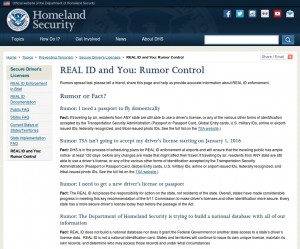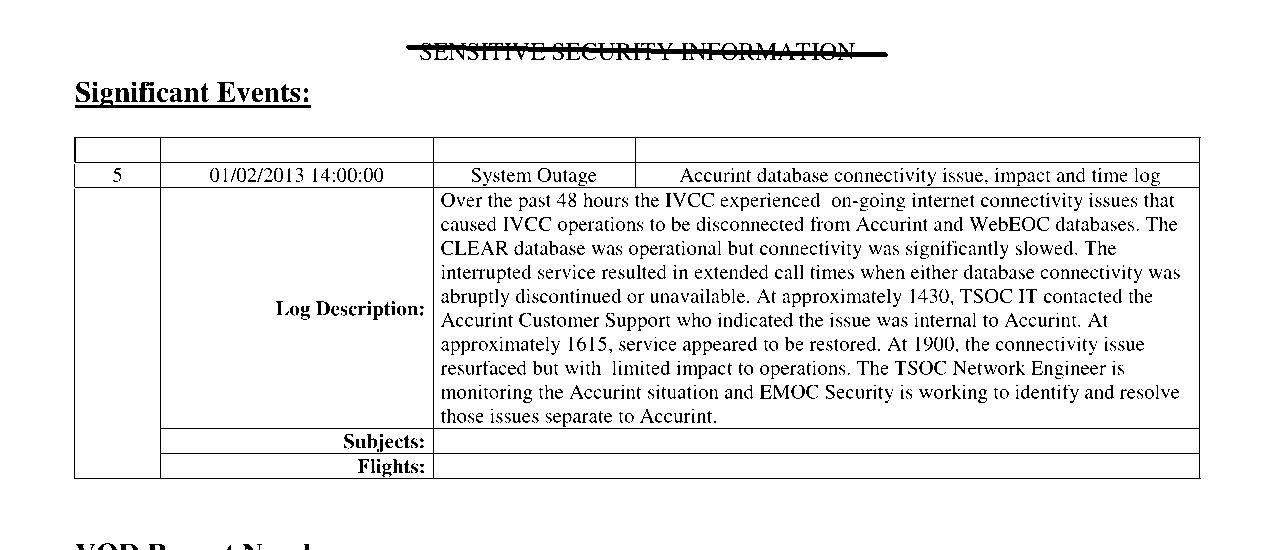DHS posts new lies about the REAL-ID Act
In response to a flurry of publicity kicked off by a story last week in the New York Times in which we were quoted, the DHS has posted several new or updated pages about the REAL-ID Act on its website, including a new page headed, “REAL ID and You: Rumor Control“.
Not surprisingly, the DHS is still lying about what the REAL-ID Act requires. According to the new “Rumor Control” page on DHS.gov:
Rumor: The Department of Homeland Security is trying to build a national database with all of our information
Fact: REAL ID does not build a national database nor does it grant the Federal Government or another state access to a state’s driver’s license data. States and territories will continue to … maintain its own records, and determine who may access those records
This is a lie. The text of the REAL-ID Act, Title II, Section 202(d)(12), is clear and unambiguous:
(d) To meet the requirements of this section, a State shall adopt the following practices in the issuance of drivers’ licenses and identification cards:…
(12) Provide electronic access to all other States to information contained in the motor vehicle database of the State.
(13) Maintain a State motor vehicle database that contains, at a minimum —
(A) all data fields printed on drivers’ licenses and identification cards issued by the State; and
(B) motor vehicle drivers’ histories, including motor vehicle violations, suspensions, and points on licenses.
The REAL-ID Act won’t require you to show ID to fly. But unless the REAL-ID Act is repealed by Congress, it will require states to grant all other states access to drivers license and state ID data or risk having the DHS try to harass residents of those states that don’t participate.
As we’ve discussed previously, the main point of the REAL-ID Act is to intimidate or otherwise induce state governments into creating a distributed national ID databases, through which a single query roted through a national “hub” (operated by a private contractor, the AAMVA) will be able to retrieve data, including standardized digital photographs, from the drivers’ license and ID databases of all 50 states, the District of Columbia, and US territories (Puerto Rico, Guam, U.S. Virgin Islands, American Samoa, Northern Mariana Islands, etc.).
The DHS is lying about what the REAL-ID Act requires because it knows that the real point of the law is the distributed national database and its contents, and because most of the opposition to the law by individuals, civil liberties advocates, and state legislators and governors is based on opposition to this distributed but functionally integrated and national database.
Since the DHS has no authority to compel state governments to “comply” with the REAL-ID Act, the DHS is relying on threats — most of them empty. The latest official statements posted on DHS.gov send a clear message to state officials trying to decide what to do about the REAL-ID Act. That message is that the DHS lies about the REAL-ID Act.
If you want to know whether the REAL-ID Act (or any provision of Federal law or regulations) even purports to require anyone to show any ID to fly, read the law: It doesn’t.
If you want to know whether the REAL-ID Act would require states that want to “comply” to connect their state drivers’ license and ID databases to the national “hub” that gives all other states root access to that database, read the law: It does.
Don’t believe the DHS lies, and don’t take DHS threats at face value.


